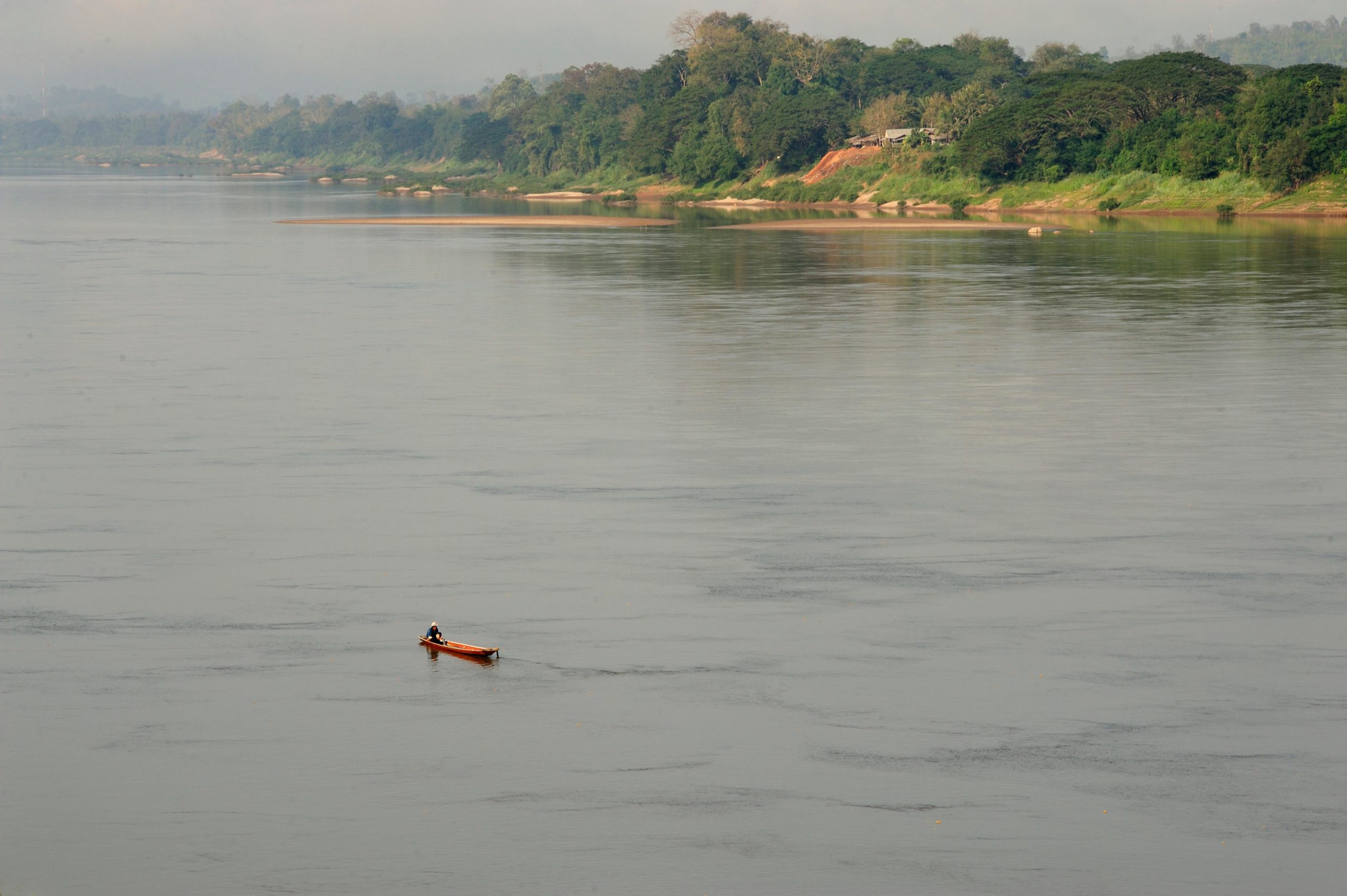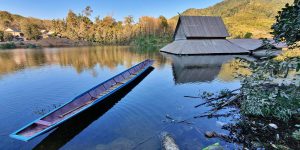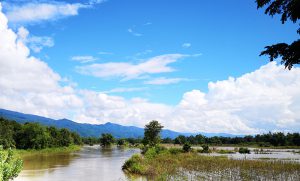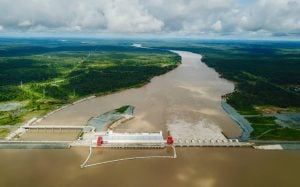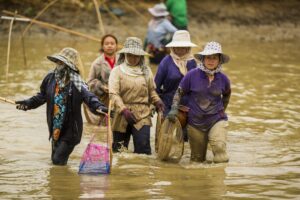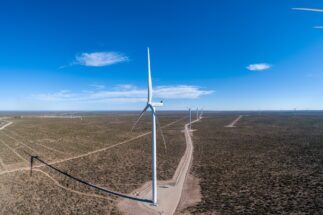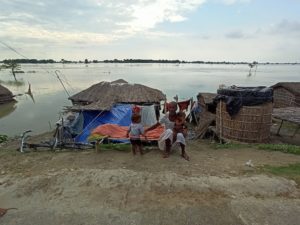“Water rises so fast and drops so fast because the water doesn’t flow naturally… It has huge impacts on us. It’s hard to catch any fish, and the fish cannot lay eggs,” says Prayoon Saen-ae, 62, head of a local fishermen group in Chiang Khan district, northern Thailand.
The Mekong River Commission (MRC) officially began a six-month prior consultation phase for the China-backed Sanakham dam on 30 July. Thai activists find themselves fighting against the hydropower project which is set to be built in Laos two kilometres from the border with Thailand, within sight of Thailand’s Chiang Khan, the beginning of a more than 800-kilometre Mekong border between the two countries.
The 684MW project is to be developed by a subsidiary of Datang International Power Generation, a state-owned Chinese power company, and is slated for completion in 2028. With seven planned Mekong mainstream dam projects in Laos, excluding the already operational Xayaburi dam, Sanakham is the sixth Lower Mekong dam to undergo prior consultation.
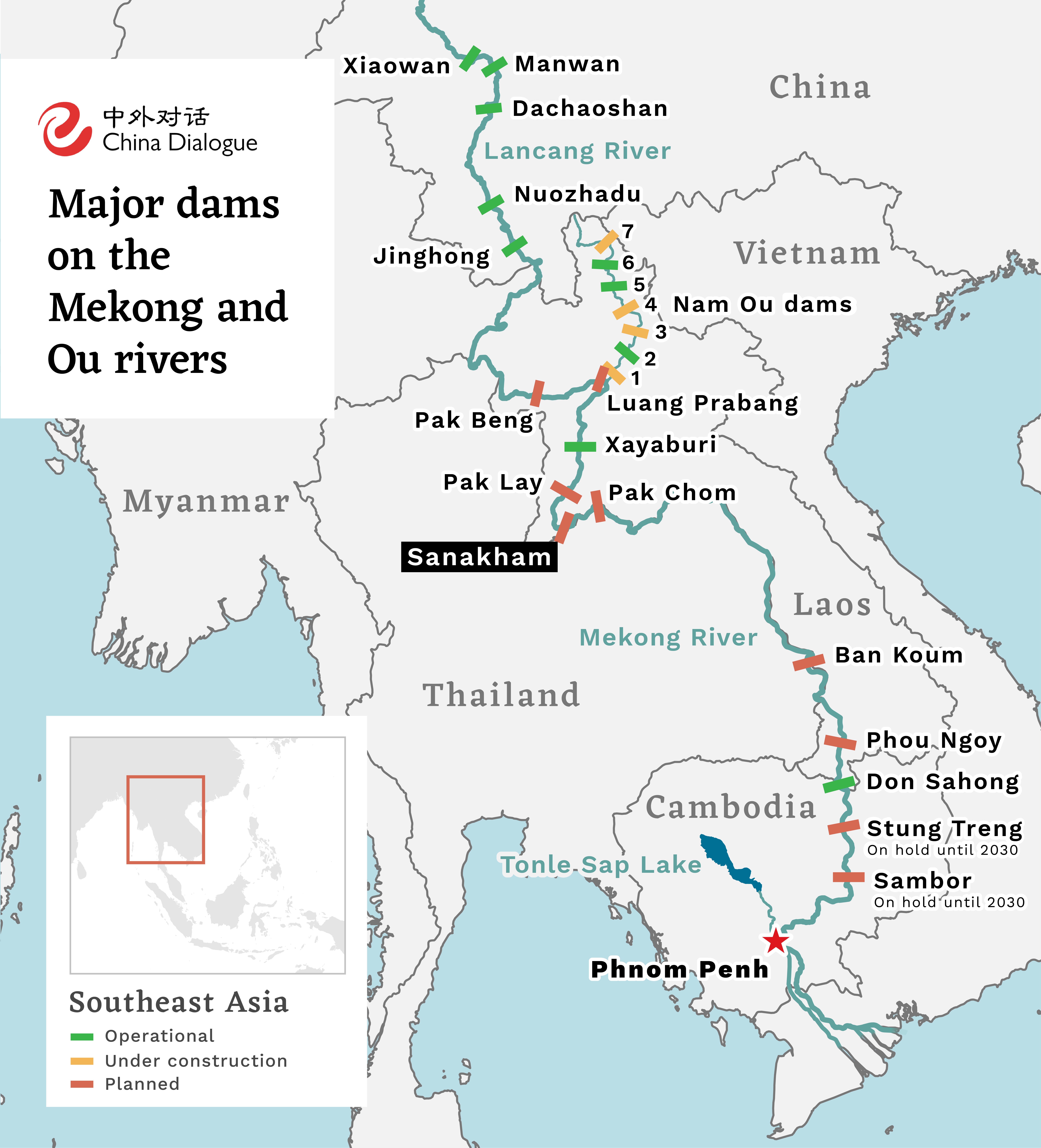
“We protested against the Xayaburi project, and it is hard to protest because it is on their soil – not ours” says Prayoon Saen-ae, a lifelong resident of Chiang Khan. He says NGOs are the only ones who come to talk to him about the Sanakham dam. He says he’s “slightly mad at [the Thai government] because we can’t do anything about it. When we protested against the Xayaburi dam, the Thai government couldn’t help us with anything. They always come up with excuses.”
The MRC Joint Committee Working Group rejected documents for the prior consultation step and sent them back to the Laos government for revision, citing “out of date” information, but neither the MRC nor the Thai authorities can stop the dam.
“The villagers are aware of this dam, but they just don’t know what to do about it,” says Channarong Wongla, 50, of the Rak Chiang Khan Conservation Group. “We exchange information and inform the villagers through the messaging app Line and on Facebook groups.”
Laos’ use of the Mekong and its tributaries in an attempt to become the “battery of Asia” has caused difficulties in the transboundary governance of water resources. There are several new dams proposed for upstream of Sanakham, including China-backed projects at Pak Lay and Pak Beng, and the Vietnam-funded Luang Prabang dam. On the Nam Ou, a tributary responsible for important sediment reaching the Mekong, Laos has a cascade of seven planned and completed hydropower projects, with little environmental oversight.
The lack of press freedom and civil society in Laos has put Thailand’s activists in a unique position to speak out against the construction of the $2 billion Sanakham dam.
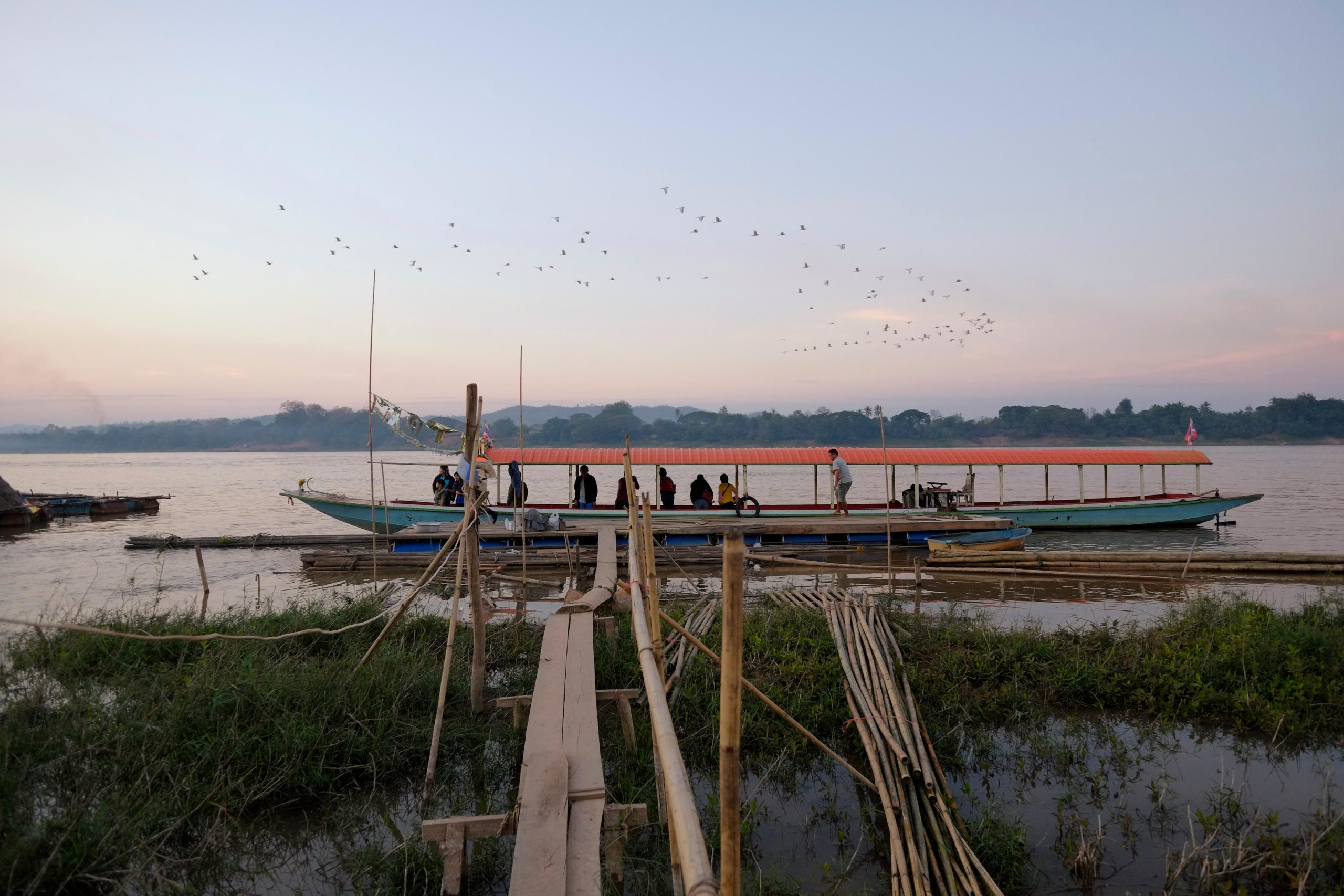
“The main goal is to stop the project. We are planning to make villagers aware of laws, rights and impacts that stem from the dam project,” says Channarong Wongla, who has a degree in hydropower dam design and worked in industrial towns and companies for years until deciding to return home to Chiang Khan to engage with environmental issues.
Thai NGO collectives, such as Save the Mekong and People’s Network of Isaan Mekong Basin, have been quick to criticise the Sanakham dam, citing immediate environmental concerns and the possibility of a repeat of the 2019 drought.
No buyer, no Sanakham dam
“Who needs it? Who actually needs it?” says Pianporn Deetes of NGO International Rivers. “Thailand doesn’t need it as we have an electricity oversupply. So who actually needs it? Construction companies? Banks? Or those in power who might get personal benefits?”
Like Xayaburi, the Sanakham dam would supply power to Thailand, but groups are pressuring the MRC to move the dam’s location as well as requesting that Thailand refuse to buy power from it so that the project is less feasible financially.
“What I’ve seen for the past decade in my profession is that most of their hydro projects have been driven by the construction sector and related industries, not by real demand for electricity,” says Pianporn Deetes.
Thailand’s oversupply of electricity has been exacerbated by the Covid-19 pandemic, with the energy ministry stating recently that energy demand has fallen to around 40% of total capacity.
Recently the Electricity Generating Authority of Thailand (Egat) announced plans to decommission old plants, promote power-intensive agribusiness, and sell electricity to Myanmar.
“Now, we are in a time of health crisis, how are we going to justify buying more power?” says Suwit Kulapwong, head of the Isaan Human Rights and Environmental Association and representative from the People’s Network.
The People’s Network represented by Suwit has been at the forefront of conservation efforts against the Sanakham dam, registering its objections as early as May.
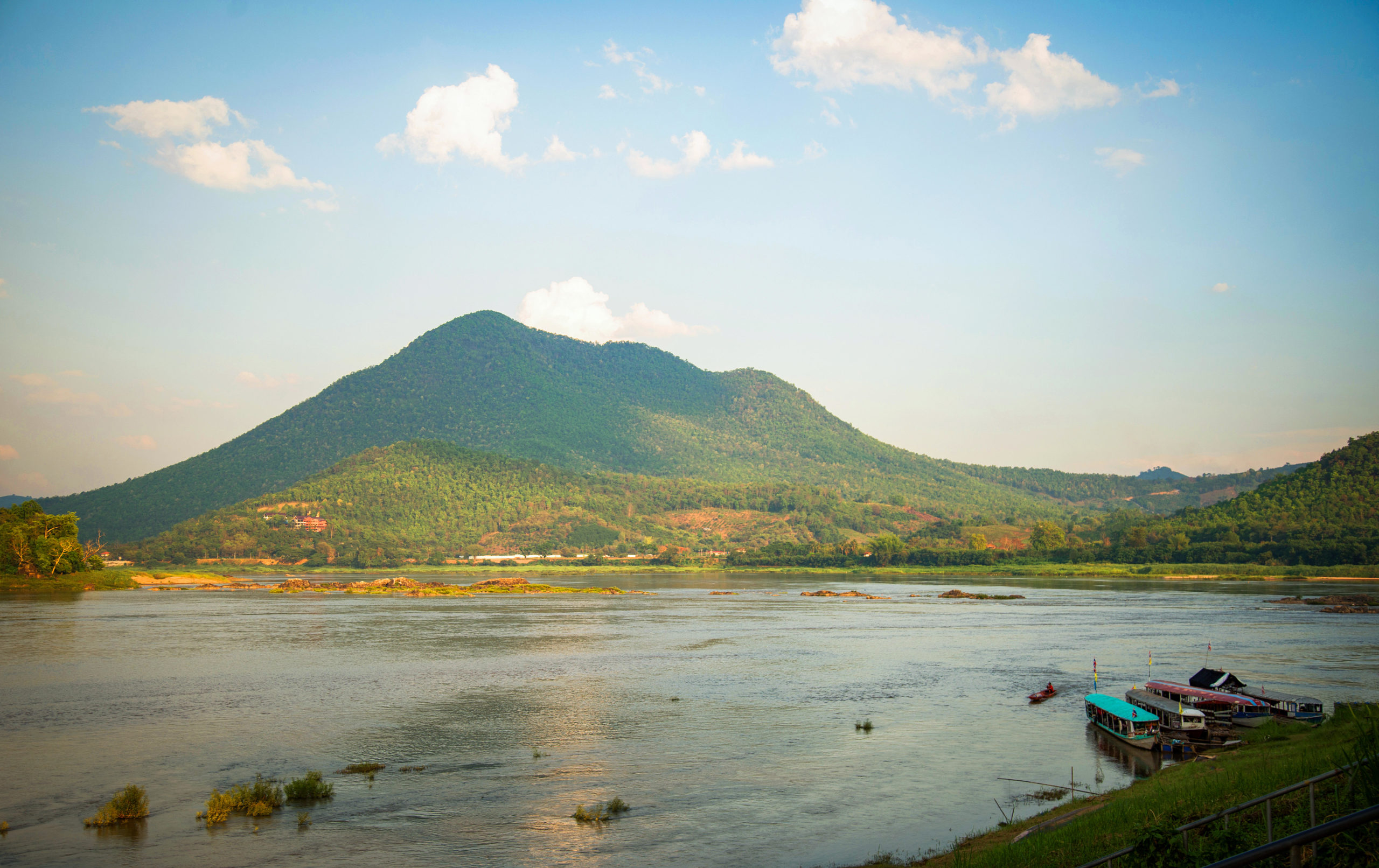
Rubber stamp
“Sanakham dam should not be built. Community and civil society are taking actions at national and regional levels to stop the project, highlighting how it’s unnecessary, risky and expensive,” says Gary Lee of International Rivers in Thailand, adding that Loei province, is already suffering from the Xayaburi dam. “Impacts include rapid fluctuations in water levels, disruption of sediment and vital nutrients, which in turn have had major impacts on the aquatic resources important to communities’ livelihoods and income.”
Sanakham dam’s impact assessments to the MRC made little reference to any studies in the last decade and allegedly plagiarised from the Pak Lay project more than 50 kilometres away – changing only the name of the project. The MRC, however, has no power to veto the construction of Lao dams and the prior consultation remains advisory.
The prior consultation process has proven contentious, with critics saying it is toothless and that the discussions regarding hydropower projects are framed around mitigation rather than whether the project should go forward.
Gary Lee points out, however, that “starting the prior consultation process doesn’t necessarily mean the Sanakham dam will proceed. For example, Pak Beng and Pak Lay dams, which completed the prior consultation process in 2017 and 2019 respectively, have not yet progressed”. The two dams have yet to sign power purchase agreements with Thailand, he adds.
The 1995 Mekong Agreement, upon which the prior consultation process is based, involves notifying countries to make recommendations and mitigate any potential adverse transboundary impacts. This has happened with Xayaburi, Don Sahong, Pak Beng, Pak Lay and Luang Prabang. For Xayaburi, the process prompted the Lao government to invest in modifying the dam’s design to address the problems of sediment transferral and fish migration.
“The MRC has conducted or commissioned multiple studies, which highlight that large-scale dams on the Mekong mainstream and tributaries seriously threaten the Mekong’s ecology, economy and food security, with poor households the most impacted,” says Gary Lee. “However, the projects have proceeded, downplaying or ignoring the wealth of scientific evidence.”
It has been alleged that the developer is already building roads to access the Sanakham dam site.
“I don’t think [the MRC] has any usefulness,” says Channarong Wongla. “We don’t even need to bring the MRC into discussion about cancelling dam projects because they are more like the body that encourages dam projects.”
Absent scrapping the Sanakham project, the Thai authorities are preparing to mitigate the effects of the dam, with Deputy Prime Minister Prawit Wongsuwon emphasising the effects on sediment, fisheries and navigation.
Government at fault
Like the MRC, Thailand’s government has little power to put the brakes on a China-built dam in Laos.
“As far as I know, it cannot be stopped because Sanakham will be built on Laos’ soil. It is their right to do so,” says Lertsak Pattanachaikul, a member of parliament for Loei province. He adds that there is not much awareness of the dam in Thailand and that it was brought to his attention by a local volunteer group working with the Department of Environmental Quality Promotion.
Lertsak took his reservations about the Sanakham dam to the Thai government on July 23. In a speech to parliament, he suggested that Egat should refuse to buy power from the Sanakham dam.
Prapat Photasuthon, Deputy Minister of Agriculture and Cooperatives, attempted to answer Lertsak’s queries, saying that Sanakham will be smaller than Xayaburi and that the impacts of the dams on the Mekong are a “new reality”.
Lertsak told China Dialogue: “My duty as an MP is trying to make the government realise the impacts that will befall the villagers living along the river. The fluctuation of water levels has been a problem for them since China started their dam projects 20 years ago. But when Xayaburi started, we could clearly see the change. The Mekong river is so dry. So, this project will impact the whole river system. It will be worse.”
Environmental groups and the government have been quick to point out the effect the new dam would have on public works projects. The sleepy Chiang Khan region is a draw for tourists, and locals and businesses alike worry about how the sector will be hit. In parliament, Lertsak predicted the new dam would sully this tax-payer-funded view from a newly built glass skywalk.
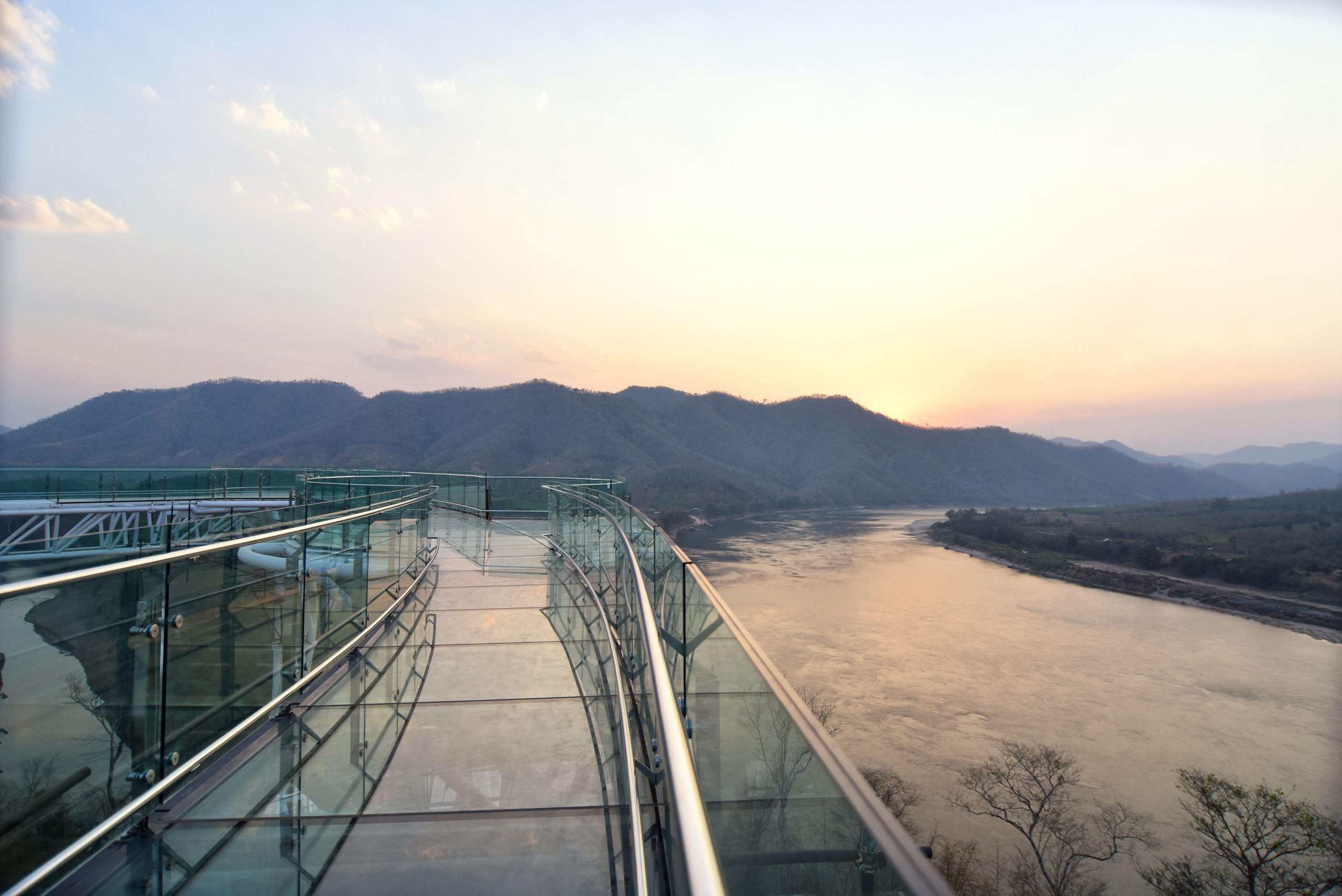
Chiang Khan and the rest of Loei province face other controversial water management projects, including the Kong-Loei-Chi-Mun project, an ambitious $75 billion domestic project in Thailand to divert water from the Mekong to irrigate 17 provinces. The Sanakham dam and the drying Mekong put this 16-year project, which is also unpopular with many locals in the region, in jeopardy, activists claim.
There have also been calls from activists and the government to address the susceptibility of the Sanakham dam to earthquake damage. The Loei Fault hasn’t been added to the project information, says Channarong Wongla at Rak Chiang Khan. Following a recent mild earthquake, the Department of Mineral Resources will assess the Loei Fault in 2022.
“I am particularly concerned about safety because of the news about dams collapsing in Laos. For Xayaburi, we know that a Thai company built it and it will be up to standard,” says MP Lertsak Pattanachaikul. The South Korea-built Saddle Dam D from SK Group in southern Laos collapsed in 2018, killing 40 and displacing thousands. “For Sanakham, it is a Chinese investment project and the project will likely be built by their Chinese team. I am concerned about this.”
China counterweight
China’s involvement in the Sanakham dam project and its subsequent funding of the Pak Lay and Pak Beng dams – as well as its carte blanche for projects in Laos – has also caused concern among activists and the Thai government.
Upstream of Laos, China has 12 mega-dams on its section of the Mekong, known in China as the Lancang, and recent studies from Eyes on Earth have claimed that China is holding back much-needed water from downstream countries, exacerbating drought and transboundary Mekong tensions. The MRC and a group of Mekong experts refuted the claim but reasserted the need for more data-sharing from China.
“Thailand’s Office of National Water Resources has been critical of how newly mooted mainstream Mekong dams in Laos, Sanakham included, impact hydrological flow as well as sediment flow and fish migration downstream,” says Brian Eyler at the Stimson Center and author of Last Days of the Mighty Mekong. “[China’s upstream dams] introduce uncertainty into what was previously a fairly predictable hydrological cycle, and that uncertainty will not be attractive to prospective financial backers of downstream dams.”
In late August, China’s Premier Li Keqiang announced that China would share full-year data with the lower Mekong countries to help allay concerns, but whether this will come from more than the two monitoring sites currently in use has not yet been announced. The Lancang-Mekong Cooperation mechanism, China’s answer to development planning in lower Mekong countries, met with Mekong country leaders on 25 August to confirm more data would be shared with downstream countries.
The hydropower issue is not a high priority for the LMC, Eyler says, but both the LMC and Belt and Road Initiative projects present transboundary obstacle for activists in Thailand, as opposed to Laos and Cambodia, where China’s investments are largely immune from criticism.
“In Laos, you can be abducted for talking about dams,” Suwit says. Last year, Lao authorities arrested eight activists for planning a protest regarding land grabs, dam building and deforestation. Suwit says the close relationship between China and Thailand makes dealing with these issues difficult, citing Thai-Chinese groups and bad faith outreach. “We make suggestions about good governance and transparency, so the Chinese investors send Datang company or the Confucius Institute to talk to us. They don’t even think about cancelling the project.”
This year has seen a number of victories for campaigns against further development of the Mekong, most notably the cancellation of a plan to dynamite rapids in northern Thailand so as to increase the flow of trade. In March, Cambodia put a 10-year moratorium on mainstream Mekong dams following continued development and dangers to the ecology of the Tonle Sap Lake.
As the Sanakham dam’s six-month prior consultation phase unfolds, activists hope the Thai government will refuse to buy its power and the Thai authorities have stressed options to possibly move the location of the dam further upstream.
“Nobody comes to talk to us officially about the dam. There are only local NGOs. No government or MPs,” Prayoon says as he waits for news on how China, Thailand and Laos will converge on the fishermen and ecology of his Mekong home. “We have no power to fight it.”
